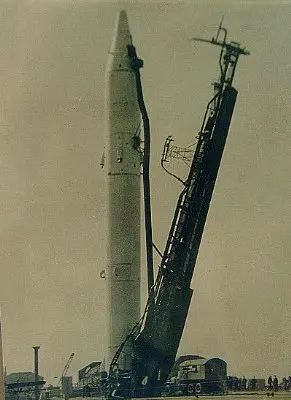OGTch n°08
Launch Failure
Liftoff Time (GMT)
14:05:02
Wednesday March 22, 1967
Mission Details
Launch Notes
The second stage exploded 455 seconds after the launch, destroying the payload.
OGTch n°08
The OGTch is a Soviet nuclear weapon system that was capable of being deployed in low Earth orbit. The OGTch could automatically and precisely trigger the atmospheric re-entry of the nuclear warhead carried by the satellite to strike any site within range of the satellite's orbit. In the context of the Cold War between the Soviet Union and the United States, the objective of this weapon system was to be able to bypass the American radar system for detecting nuclear attacks. The system was officially commissioned on 25 August 1969. The development of an early warning system called the Defense Support Program by the United States in the early 1970s, capable of detecting the placement of these weapons in orbit, and the SALT 2 disarmament agreement prohibiting the deployment of nuclear weapons in orbit, led to the withdrawal of the OGTch satellites by the Soviet Union in 1983. The OGTch satellites, with a mass of 1.7 tonnes, are composed of two sub-assemblies: the nuclear warhead fitted in a conical reentry vehicle and a manoeuvring stage responsible for autonomous navigation and braking the satellite at the chosen moment. The latter includes an inertial navigation system and a radar altimeter to measure the orbit altitude. The retrorocket, in charge of braking the satellite in order to trigger its atmospheric re-entry and thus the release of the nuclear weapon, consists of a RD-865 liquid rocket engine burning a hypergolic mixture of nitrogen peroxide and UDMH. The Yanguel-developed engine has a vacuum thrust of 7.7 tons. Two groups of four thrusters, using the gases produced by the turbine connected to the rocket engine, are responsible for controlling the orientation. In case of conflict, the OGTch satellites would be placed in a polar orbit passing through the southern hemisphere and allowing them to strike the United States from the south, thus countering NORAD's north-facing defenses.
Low Earth Orbit
1 Payload
1,700 kilograms
Launch Site
Stats
R-36 Orb
8th
Mission
2nd
Mission of 1967
Yuzhmash
233rd
Mission
14th
Mission of 1967
1967
27th
Orbital launch attempt

